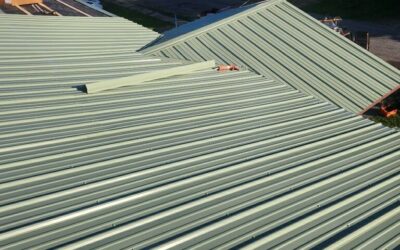Best Time of Year to Remove Moss from Your Roof
Moss on your roof may seem harmless at first, but it can cause significant damage over time. It retains moisture, leading to shingle deterioration, wood rot, and even leaks. For homeowners in Northeast Ohio, where the climate can be harsh due to cold winters and high humidity, knowing the best time to remove moss is crucial for maintaining the longevity of your roof. In this guide, we’ll explore the ideal seasons for moss removal, effective methods, and preventive measures to keep your roof in top condition.
Understanding Moss Growth on Roofs
Moss thrives in damp, shaded environments. It commonly grows on north-facing roofs, under tree cover, or in areas with poor drainage. If left unchecked, moss can:
- Lift shingles, allowing water to seep underneath.
- Cause wood rot by trapping moisture.
- Reduce the lifespan of your roof.
- Impact curb appeal and home value.
Best Time of Year to Remove Moss from Your Roof
Choosing the right season for moss removal ensures effective treatment without causing damage to your roof. Here’s a breakdown of the best times of year to tackle moss removal in Northeast Ohio:
1. Spring: A Great Time to Start
Spring is one of the best times to remove moss because:
- The weather is mild, making it easier to work on the roof.
- Spring rains help rinse away cleaning solutions after treatment.
- You can address winter damage early before summer heat sets in.
What to Do:
- Inspect your roof for moss growth and winter damage.
- Apply moss-killing treatments before the hot summer months.
- Clean gutters and trim overhanging branches to allow more sunlight.
2. Summer: A Less Ideal Time But Still Possible
While summer isn’t the best time to remove moss, it can still be done under the right conditions. The downsides include:
- High temperatures may make roof work dangerous.
- Direct sunlight can cause cleaning solutions to evaporate too quickly.
If Removing Moss in Summer:
- Work in the early morning or evening when temperatures are cooler.
- Avoid using harsh chemicals that could damage hot shingles.
- Ensure proper hydration to prevent heat-related health risks.
3. Fall: One of the Best Times for Moss Removal
Fall is an excellent time to remove moss for several reasons:
- The weather is cooler, making roof work safer.
- Moss tends to be more visible after summer growth.
- Removing moss in fall prevents buildup before winter snow.
What to Do:
- Use a gentle cleaning method to avoid damaging shingles.
- Check for fallen leaves that can trap moisture and promote moss growth.
- Consider installing zinc or copper strips to prevent future moss formation.
4. Winter: Not Recommended for Moss Removal
Winter is the least ideal time to remove moss due to:
- Freezing temperatures, which can make roof work hazardous.
- Snow and ice, which make roofs slippery and dangerous.
- The risk of damaging shingles by walking on them in cold conditions.
What You Can Do in Winter:
- Inspect from the ground using binoculars to assess moss growth.
- Plan for moss removal in early spring.
- Address attic ventilation and insulation to prevent excess moisture buildup.
How to Remove Moss from Your Roof Safely
If you’ve determined the right season for moss removal, follow these steps to clean your roof effectively.
Step 1: Gather Necessary Tools and Materials
- Soft-bristle brush or broom (avoid pressure washers)
- Garden hose with spray nozzle
- Moss-killing solution (store-bought or homemade)
- Ladder with stabilizers
- Protective gloves and safety gear
- Roofing shoes for better traction
Step 2: Apply a Moss Killer
Choose a moss-killing product that is safe for roofing materials. Some options include:
- Commercial Roof Moss Removers (e.g., Wet & Forget, Moss B Ware)
- DIY Solution: Mix one part water and one part white vinegar or use a diluted bleach solution (one part bleach to three parts water).
- Eco-Friendly Options: Baking soda or diluted hydrogen peroxide.
How to Apply:
- Use a garden sprayer to apply the solution to affected areas.
- Let it sit for at least 15–20 minutes to break down the moss.
- Avoid rinsing immediately to allow the treatment to work effectively.
Step 3: Gently Remove the Moss
- Use a soft brush or broom to gently scrub the moss away.
- Work from the top down to prevent shingle damage.
- Rinse with a garden hose (avoid high-pressure washers, as they can lift shingles).
Step 4: Prevent Future Moss Growth
- Improve Sunlight Exposure: Trim trees and bushes to reduce shade.
- Enhance Roof Ventilation: Ensure proper attic ventilation to keep the roof dry.
- Install Zinc or Copper Strips: These metals release ions that prevent moss growth.
- Keep Gutters Clean: Clogged gutters trap moisture, encouraging moss formation.
- Regular Roof Inspections: Check for early signs of moss and take preventive action.
Why Choose S&K Construction and Remodeling LLC for Roof Maintenance?
As a trusted Owens Corning Preferred Contractor in Northeast Ohio, we specialize in roof maintenance and moss removal in Youngstown, Cleveland, Lakewood, Medina, Wickliffe, Twinsburg, Cleveland Heights, Euclid, Willoughby, Beachwood, Chagrin Falls, Chardon, Concord, Gates Mills, Kirtland Hills, Madison, Mayfield Heights, Pepper Pike, and Walton Hills. We understand the unique challenges of the local climate and provide expert solutions to keep your roof in top shape year-round.
Our Services Include:
- Roof Inspections
- Moss and Algae Removal
- Roof Repairs and Replacements
- Gutter Cleaning and Maintenance
Conclusion
The best time of year to remove moss from your roof depends on weather conditions, roof accessibility, and moss growth levels. Spring and fall are the most ideal seasons for moss removal, while winter should be avoided due to safety concerns. By using proper techniques and preventive measures, you can keep your roof moss-free and extend its lifespan.
If you need professional help removing moss from your roof, contact S&K Construction and Remodeling LLC today for expert roofing services in Northeast Ohio!
 (440) 307-2060
(440) 307-2060


